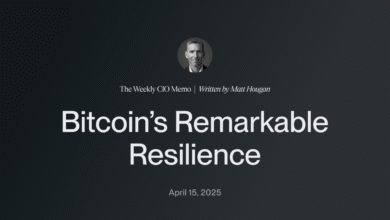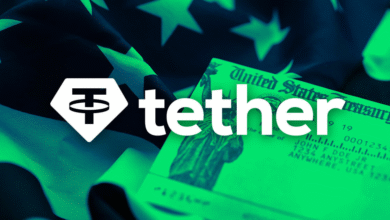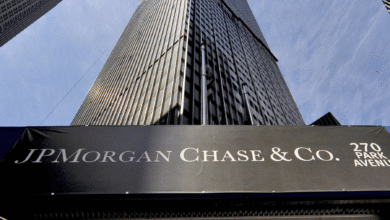Bitcoin Hashrate Rises: Miners Rush Towards Profitability

Bitcoin hashrate plays a pivotal role in the health and dynamics of the cryptocurrency market. Recently, it surged to an impressive 898 exahash per second (EH/s), reflecting an 11.62% increase in Bitcoin mining profitability compared to last month. This dramatic uptick follows a price surge, allowing miners to capitalize on more favorable conditions amid fluctuating network difficulty. With Bitcoin block time now averaging approximately 9 minutes and 19 seconds, miners are actively adjusting their strategies to maximize their gains. Such increases in hashrate not only influence individual miner profitability but also have wider implications for the stability and security of the Bitcoin network itself.
The computational power, often referred to as hashing capacity, within the Bitcoin ecosystem has recently experienced remarkable growth. As operational efficiencies improve and profitability rises for Bitcoin miners, the overall network continues to adapt to the changing landscape. The increasing hash power indicates a significant rebound in mining activity, particularly in response to a recent Bitcoin price surge. Moreover, with adjustments made to the network difficulty, the average block generation time is currently outperforming traditional metrics. This rebound is also tied to broader trends in the market, revealing the interconnectedness of mining efficiency and cryptocurrency valuation.
Understanding Bitcoin Hashrate and Its Impact on Mining Profitability
Bitcoin hashrate refers to the computational power used to mine and process transactions on the Bitcoin network. As the hashrate increases, it often indicates that more miners are investing in powerful hardware to increase their chances of solving blocks. This surge in hashrate, as seen with the recent addition of 88 EH/s, typically correlates with improved mining profitability for miners, as more mined blocks can potentially lead to higher rewards. With Bitcoin’s hashrate now at 898 EH/s, these miners are optimizing their operations due to favorable conditions in the market.
The increase in Bitcoin’s hashrate not only reflects miners’ confidence in profitability but also ties into the broader dynamics of Bitcoin mining profitability, which can be influenced by the network difficulty level. Specifically, with a recent difficulty adjustment of 7.48%, miners must continuously adapt to maintain their profit margins. If the hashrate continues to rise along with Bitcoin prices, this could lead to an even higher network difficulty, thus affecting the potential profitability of mining as the rewards are adjusted.
Analyzing the Relationship Between Bitcoin Price Surge and Mining Feasibility
The Bitcoin market is notoriously volatile, with price fluctuations often impacting miners’ operations. Recently, a surge in Bitcoin prices has encouraged many miners to re-enter the market or ramp up their mining efforts, thus contributing to the heightened hashrate. A higher Bitcoin price means that miners can cover their operational costs more easily, making mining an attractive venture once again. The recent increase in profitability of 11.62% emphasizes how essential price movements are in the mining equation.
However, the relationship between Bitcoin’s price and mining feasibility is complex. While rising prices provide immediate profits, they can also lead to an increase in network difficulty as more miners compete for rewards. The mining landscape requires a careful balance; miners must not only consider the current price surges but also stay ahead of potential changes in network difficulty. As block times average around 9 minutes and 19 seconds instead of the standard 10 minutes, mining efficiency becomes increasingly important for sustaining profitability.
The Role of Bitcoin Network Difficulty in Mining Strategy
Network difficulty is a critical component in the Bitcoin mining ecosystem, adjusting approximately every two weeks to maintain a consistent block time of around 10 minutes. However, with recent metrics showing a 7.48% adjustment following an 88 EH/s hashrate increase, miners are faced with new challenges. An upward adjustment in difficulty means that miners will have to invest in more powerful equipment or optimize their current operations to remain profitable. This dynamic creates a tug-of-war between hashrate growth and profitability margins for miners.
Moreover, the increased competition from an expanding hashrate can rapidly erode profit margins, particularly for those operating with less efficient hardware. This calls for miners to not only track Bitcoin prices but also to implement strategies that optimize their hashrate efficiencies. As the next difficulty adjustment looms, miners must prepare for all scenarios, including potential increases that could significantly impact their operations if Bitcoin prices do not keep pace.
How Hashrate Increase Influences Bitcoin Block Time
The Bitcoin block time is a critical aspect of the blockchain, indicating how quickly new blocks are added to the chain. A significant increase in hashrate, like the recent surge to 898 EH/s, directly influences this metric. With more computational power available, blocks are being mined more quickly than the usual ten-minute average, currently seeing around 9 minutes and 19 seconds per block. While this efficiency can lead to faster transaction confirmations, it also heralds an adjustment in network difficulty that miners must prepare for.
This shorter block time means that Bitcoin’s overall supply inflation could temporarily rise, which might prompt an upward adjustment in difficulty. For miners, this creates a unique opportunity but also brings risks; faster block generation can lead to difficulty spikes that, without careful planning, could disrupt profitability. Miners must navigate these changes strategically, ensuring that they maintain efficiency and adapt to both the benefits of increased hashrate and the challenges of fluctuating network conditions.
Navigating the Future of Bitcoin Mining Post-July 2025
As the Bitcoin ecosystem continues to evolve, the upcoming difficulty adjustment scheduled for July 12, 2025, will significantly influence miners’ strategies. Current projections suggest a potential rise of 7.3%, which would counterbalance the recent reductions and present new challenges for those in the mining sector. Understanding and anticipating these adjustments will be vital for miners looking to thrive in a competitive landscape. Such changes could cause more significant shifts in hashrate and profitability, pushing miners to innovate continuously.
In a rapidly changing environment such as Bitcoin mining, adaptability will be key as miners evaluate both operational costs and the potential for profitability. With the industry increasingly responsive to market conditions, closely monitoring price trends, hashrate fluctuations, and network difficulty will be necessary for miners to sustain their operations profitably. The next six months leading up to the adjustment will be pivotal in shaping the mining landscape and determining who can effectively operate in this demanding market.
Strategies for Maximizing Bitcoin Mining Profitability
To maximize Bitcoin mining profitability, miners must adopt multifaceted strategies. First and foremost, understanding the metrics of hashrate, network difficulty, and the prevailing Bitcoin price are essential. Miners should regularly assess their operational efficiency against the backdrop of a fluctuating market. By investing in more advanced mining rigs and optimizing their energy costs, they can improve their productivity and earnings, especially in a time when hashrate is rising significantly.
Moreover, embracing technology such as cloud mining or joining mining pools can alleviate some of the financial burdens associated with solo mining. These options allow miners to leverage shared resources and technology, leading to more consistent profits even amid the uncertainties of market volatility. As Bitcoin continues to gain recognition and value, miners who remain adaptable and innovative will play crucial roles in shaping the future of this digital currency.
The Financial Implications of Rising Hashrate for Miners
The financial implications of a rising hashrate are significant for Bitcoin miners. As the hashrate increases, the competition intensifies, which can eventually lead to diminishing returns if network difficulty adjustments do not keep pace with Bitcoin’s price surge. The dynamic nature of the market demands that miners stay vigilant; what may start as increased profitability can quickly turn into another struggle for earnings if the difficulty spikes higher than expected.
Furthermore, miners must be aware of the operational costs associated with high hashrates—power consumption, hardware maintenance, and cooling costs can accumulate rapidly. However, if infrastructure investments are made wisely, the potential for high returns exists, especially if Bitcoin prices sustain their upward trajectory. With the correct blending of strategy, efficiency, and market awareness, miners can effectively manage the balance between increasing hashrate and maintaining profitability.
Future Trends in Bitcoin Mining: Opportunities and Challenges
The future of Bitcoin mining appears to be filled with both opportunities and challenges, particularly as the hashrate continues to experience significant growth. With more individuals and entities entering the mining space, there are increased chances for collaboration and sharing of technological advancements, leading to greater operational efficiencies. Additionally, as awareness of Bitcoin grows and institutional investment ramps up, mining could become even more profitable than it is today.
However, the flip side of this growth is increased competition, pushing miners to innovate continually to maintain their edge. The volatility of Bitcoin prices further complicates the equation, emphasizing the need for responsible operational practices and financial foresight. Miners who can effectively navigate these complexities, taking advantage of technological advancements and market trends while remaining adaptive, will likely lead the way in the new era of Bitcoin mining.
The Importance of Staying Informed in the Evolving Bitcoin Landscape
As the Bitcoin landscape is in a constant state of flux, miners must prioritize staying informed about market trends, technological advancements, and changes in regulations. Engaging with reliable resources and communities will provide valuable insights into how fluctuations in hashrate and Bitcoin price could influence their operations. Understanding these aspects allows miners to make informed strategic decisions, ensuring sustainability and profitability in their endeavors.
Additionally, accessing data on network difficulty adjustments and their potential impacts is crucial for anyone involved in Bitcoin mining. By monitoring these metrics closely, miners can plan ahead, preparing their strategies for potential challenges that may arise. In the fast-paced world of Bitcoin, knowledge truly is power, and those who are proactive in staying updated will have the best chances of success in the competitive mining environment.
Frequently Asked Questions
What is Bitcoin hashrate and why is it important for Bitcoin mining profitability?
Bitcoin hashrate refers to the total computational power used by miners to process transactions and secure the Bitcoin network. A higher hashrate indicates more miners are participating, which can improve Bitcoin mining profitability as it often leads to quicker block generation and higher rewards due to competitive mining processes.
How does the increase in Bitcoin hashrate impact Bitcoin network difficulty?
An increase in Bitcoin hashrate typically leads to a rise in Bitcoin network difficulty, as the protocol adjusts the mining difficulty every 2016 blocks to ensure that blocks are generated approximately every 10 minutes. When more computational power enters the network, the difficulty level increases to maintain this block time.
Can Bitcoin price surges influence Bitcoin hashrate?
Yes, Bitcoin price surges can significantly influence Bitcoin hashrate. When the price of Bitcoin increases, miners are more incentivized to invest in additional hardware and increase their hashrate, aiming to maximize profitability during high price periods.
What does the Bitcoin block time indicate about network efficiency related to hashrate changes?
Bitcoin block time measures how long it takes to mine a new block. Currently averaging about 9 minutes and 19 seconds, a decrease in block time often indicates an increase in hashrate, reflecting the efficiency of miners as they respond to market conditions and mining profitability.
How do fluctuations in Bitcoin hashrate relate to mining profitability?
Fluctuations in Bitcoin hashrate can directly impact mining profitability. An increase in hashrate might mean more competition among miners, which can lead to diminished returns if network difficulty increases significantly. Conversely, a stable or decreasing hashrate with consistent Bitcoin prices can enhance profitability as fewer miners compete for the same rewards.
What role does the hash price play in the profitability of Bitcoin mining operations?
The hash price indicates the estimated earnings from mining power, measured in dollars per petahash. As the hash price rises, it enhances Bitcoin mining profitability, encouraging miners to maintain or increase their hashrate for better returns.
How can miners prepare for the upcoming Bitcoin network difficulty adjustment?
Miners can prepare for the Bitcoin network difficulty adjustment by closely monitoring changes in hashrate trends, network difficulty, and market prices. Adapting their operations and optimizing hardware efficiency during these fluctuations can help ensure they maintain profitability after the adjustment.
What historical trends in Bitcoin hashrate can indicate future market behavior?
Historical trends in Bitcoin hashrate can indicate future market behavior, as spikes in hashrate often correlate with increased mining profitability, which can lead to higher Bitcoin prices. Analyzing past patterns allows miners and investors to make informed decisions based on ongoing market dynamics.
| Key Point | Details |
|---|---|
| Bitcoin Hashrate Increase | Rose by 88 EH/s from 810 EH/s to 898 EH/s over 11 days. |
| Profitability of Miners | Increased by 11.62% since June 5, now averaging higher returns. |
| Network Difficulty | Adjusted downwards by 7.48% six days ago, currently at 116.96 trillion. |
| Hash Price | Increased from $52.35 to approximately $58.43 per PH/s since June 5, touching $60 briefly. |
| Block Generation Time | Currently averaging about 9 minutes and 19 seconds per block, faster than the standard 10 minutes. |
| Upcoming Difficulty Adjustment | Set for July 12, 2025, with a projected increase of 7.3% that may impact profitability and mining operations. |
Summary
Bitcoin hashrate is witnessing a significant rise, with an increase of 88 EH/s indicating a robust recovery in mining profitability and network dynamics. The hash rate surge reflects the responsiveness of miners to market conditions, as they adapt quickly for higher profit margins. This trend not only enhances the competitive landscape of Bitcoin mining but also signals potential shifts in the future, especially with the upcoming difficulty adjustments.




